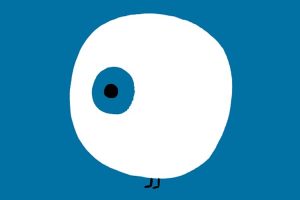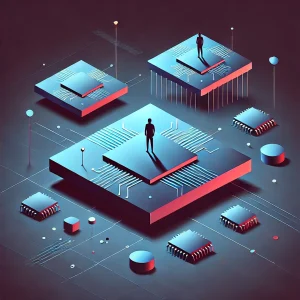Graphene
Nanotechnologist Andrea Ferrari on the properties of Graphene, its significant history, and how to send it fro...
How did the attitude to books change with the appearance of the television? What mixed forms of printed media have been created? How is knowledge conveyed in contemporary society? Professor of Romance Languages & Literature in Harvard Graduate School of Design, Jeffrey Schnapp, talks on the future of paper and electronic books.
The Electric Information Age Book is a phrase that was used by people in the late 1960’s and in early 1970’s to describe an experiment that was taking place in the domain of the mass-media communications. And by “electric information age” what they were referring to was what today we would call the first wave of the cyber culture – as computing moved out of those research centers where it was born, largely during the WW2 period, and increasingly transformed business practices, began to invade areas of society.
The whole question of what its impact might be in the realm of culture of society became increasingly felt and acute, particularly as new forms of media arose and developed in importance. Particularly television – the 1960’s was an era where television really emerged as a kind of dominate media form. There was an acute sense that somehow those more traditional forms, those traditional cultural containers and factors like forms of print culture – the magazine, the book, particularly the paperback book, books that were associated with ephemerality, not with long duration, industrial paperbacks – there was a strong sense that those genres and media would have to reinvent themselves, to somehow become a part of this new model of cultural communication and society. That was associated (in a kind of loose way) with cyber culture, but connected to the emergence of live media like television.
But it’s really a single book that crystallizes this moment, and that’s a book that illustrates the very phrase “electric information age book”. And that book is the book The Medium is the Massage. The medium is the Massage, as you can see, was an industrial paperback, it was published by Bantam books in 1967. And The medium is the massage was an attempt to literary take McLuhan’s thought, the kind of thinking about this emerging currents within society and culture that were theorized in understanding media, and to translate them into a new kind of object, a kind of multimedia book that would respond to the challenge, the competition, if you like, of live media.
And The medium is the massage was not a book that McLuhan wrote. It was – even though you see his name as an author next to another name – in reality The medium is the massage was a remix of McLuhan’s thought in a new kind of graphic, typographic collage, montage style, largely created by Quentin Fiore, who’s listed as the co-author here, a graphic artist. But alongside Quentin Fiore, somebody who’s also listed on title page is Jerome Agel, listed here as the coordinator of the book.
Agel and Fiore together really tried to invent a new kind of medium of communications, a kind of television era book, a book that makes argument through the crisscrossing images and texts, that tries to experiment with what a paperback book might look like, that has the sort of feeling of liveness almost, being almost like a kind of television representation of the thought of a major theorist thinker of the period. And Marshall McLuhan largely played a kind of a secondary role in the genesis of the project. But this was the era in which McLuhan was actually translating his own thought into television appearances, consulting work with businesses, within a whole range of domains.
I’m interested in this phenomenon, because I think it represents the beginning of a kind of crisis, you might say, in traditional print culture. That’s the arrival of the second cyber culture, of the kind of transformations – the personal computing revolution and the emergence, increasingly, of either hybrid forms of publishing between the digital and printed model, but also, of course, the whole world of experimentation with e-books, with electronic publishing, with new models of disseminating knowledge, of representing knowledge.
For me The Electronic Information Age Book is a kind of moment in the genesis, a kind of an evolutionary narrative that takes us from the first cyber culture to the second cyber culture that forms our era in a sense.
The book itself, the object, is the collaboration with a graphic designer (just like the McLuhan book has the Quentin Fiore as the co-author). The Electric Information Age Book which is this book that my colleague, my collaborator, Adam Michaels and I published in 2012, is itself a kind of book whose message, whose content and whose form, if you like, are deeply intertwined. Just as Fiore and Agel tried to make – translate – McLuhan’s message into a message that’s over-complex, speaks to an audience, that’s a hybrid audience, an audience that thinks in terms of images, reads pages by skimming, not just by linear close kinds of forms of reading. It’s a book that plays with the conventions of the book itself. You can see here: I just pass by a page where you can see the thumbs of the readers inserting themselves into the page.
Similarly Adam and I produced a scholarly book. But it’s a scholarly book that uses the same visual conventions in a kind of pastiche, kind of playful way. Simply as an attempt to build a bridge between the conversation about the future of communications, particularly print-based communications, that was taking place in the late 1960’s and the present of that conversation. And it’s a very lively conversation.
So what should a book look like in a world where digitally native forms of knowledge are increasingly the norm? That’s the question that in a sense we wanted to engage in through the creation not only of a scholarly project that excavates this otherwise largely forgotten moment of experimentation with a genre of paperbacks that had a successful life during the late 60’s and early 70’s, but mostly died out by the middle of the 1970’s. We excavate that historical moment, but we excavate it with an eye towards the present and the future.
And it’s in that context that Electric Information Age Book, our book, is a part of a larger conversation. Not only among designers and scholars in fields like my own who are interested in producing experimental books and rethinking what a book looks like in the present, but also in experimenting with crossovers between media. So, for instance, this book is paired with a series of other experiments we’ve done with published series of pamphlets that are supplements to the Electric Information Age Book.
So it’s that full sort of spectrum of possibilities that interested us both in terms of the historical project, but also this present kind of challenge, which is a challenge that I before defined in terms of knowledge design.
What does knowledge look like in the 21st century? What forms should it take? What’s the relationship between traditional print-based or textual forms of argumentation and other modes of argumentation? The use of visualizations that are generated through large data sets. The use of video. What if in the apparatus of an argument we include the entire archive that we work with, much like scientists published their data sets? What does the world look like where scholarship assumes a form of curating an entire archival repository? What does the world look like where forms of argument that are scholarly, that are research-based, archivally-based manifest themselves in a kind of process where design elements are a key feature of that active communication going far beyond textual modes of argumentation? Those are the kinds of questions that interested me particularly in this experiment.
So books have never been static. The history of books, really going back to Gutenberg, but forward through the 1960’s and 1970’s to the present, has always been one of constant reinvention. And so the arrival of new media in the case of the 50s’ and 60s’ television, or in the case of 1990s’ and 2000s’, you know, digital media, is always producing a kind of perturbation, a kind of disturbance vis-a-vis print. And that disturbance produces new forms and it engenders innovation. And I think in the 60’s and 70’s the Electric Information Age Book was an example of one of those perturbations, one of those disturbances. And it’s certainly one that begins to prefigure some of the features of the media regime that begins to, I think, become almost dominant in 1990’s and certainly into our own era, where the meshing of print and, for instance, text and image has become such a kind of a systematic feature of different communications models. Particularly the magazine, for instance, if we take that as an example.
So you could say that people were dreaming of a kind of what Alan Key would call a “dynabook” – kind of electrical book, already when they were experimenting with this kind of montage, collage-based form of televisual paperbacks in the late 60’s and early 70’s. And that’s one of the reasons I’m interested in this phenomenon, clearly.
I think the whole question of what is an electronic book is very much an open question today.
Most e-publishing is of very little design interest to me, I think, essentially is backward looking. But, of course, the real potential of tablets or of other kinds of devices as readers, the real potential of the e-book to become something very different with respect to what we understand as a book, a printed book – that’s, I think, still very much a future project. There is some very rich experimentation going on among designers, with trying to really think through what an e-book could be, books that adapt themselves to where you’re reading them, what angle you’re reading them at, to your eyesight, to all series of user-initiated constraints or possibilities – that seems to me a very rich area for future development.
But I think we are really at the infancy of the e-book. And I’ve been particularly interested in a sort of perverse way almost in the whole question of the redesign of paper books. Almost more than e-books, even though I’ve, in my own work, experimented with hybrid models. For instance, books that are printed books that expand out into a web repository that’s a kind of a part of the book, maybe with some overlap between the two elements. I’ve also experimented with diversion scenarios where the book is a separate object, but it has this sort of world where the content doesn’t overlap, that’s supported on a website. I’ve also experimented with books that have QR codes or barcodes that use sort of transfer devises, mediating devises like smartphones or tablets. I think the whole question of what those genres are gonna look like is an open question.

Nanotechnologist Andrea Ferrari on the properties of Graphene, its significant history, and how to send it fro...

Computer scientist Cordelia Schmid on computers’ ability to recognize and produce images, machine learning, an...

What makes smartphones and laptops work, the future of microchip technology, and the risks associated with chi...